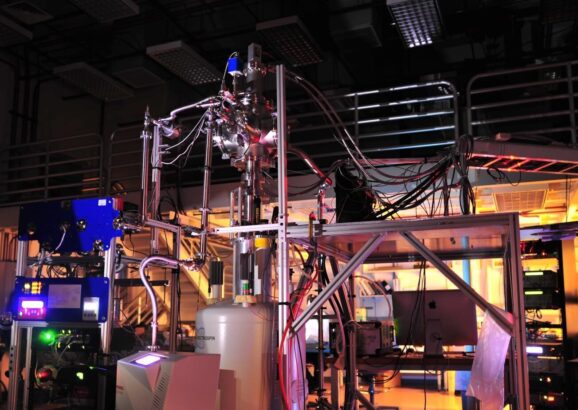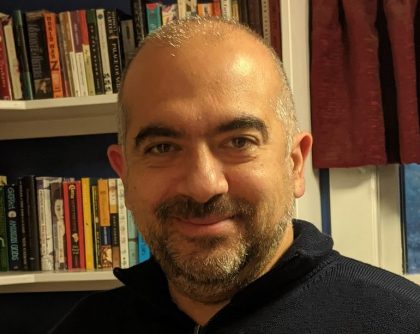Joseph A Formaggio
Research Interests
Joseph Formaggio in an experimental nuclear physicist whose work has focused on understanding the fundamental properties of neutrinos. His previous work on the Sudbury Neutrino Observatory helped shed light on the “solar neutrino problem”, which helped to firmly establish that neutrinos have mass. His subsequent work, which continues to this day, builds on this discovery and hopes to shed light on the nature and scale of the mass of the neutrino. He is a member of the KATRIN and Project 8 experiments, which use the process of tritium beta decay —originally proposed by Enrico Fermi— to measure the mass of the neutrino directly.
Formaggio’s group develops novel detector technologies and techniques to better understand the properties of neutrinos and other rare and exotic particles. The group developed the technique of cyclotron radiation emission spectroscopy to accurately measure the energy of electrons emitted in beta decay; a technique now used by the Project 8 experiment. The Formaggio group is also developing new cryogenic bolometers to better understand neutrino interactions at extremely low energies. Such detectors are part of the upcoming Ricochet experiment, which aims to study the process of coherent neutrino scattering using neutrinos created in nuclear reactors. More recently, the group has been exploring the potential role of quantum sensors and quantum readout systems for the purpose of detecting neutrinos and other weakly interacting particles. Formaggio also collaborates with Prof. Lindley Winslow on the upcoming CUPID neutrinoless double beta decay experiment.
More info:
Biographical Sketch
Joseph Formaggio received his B. S. degree from Yale University in physics in 1996. Thereafter, he received his Ph.D. in physics from Columbia University, where he did his dissertation on neutrino physics. In 2001, he joined the Sudbury Neutrino Observatory as a postdoctoral fellow at the University of Washington, where he was later appointed as a research assistant professor. He arrived at MIT in 2005, where he continues to work on experimental neutrino physics.

Closing in on the Elusive Neutrino
Project 8 marks a major milestone in its quest to measure neutrino mass
Awards & Honors
- 2019 // American Physics Society Fellow "For leadership in the pursuit of neutrino masses determination, and for developing novel technologies to attack the problem of direct detection."
- 2016 // Breakthrough Prize in Fundamental Physics (as part of the SNO collaboration)
Key Publications
-
B. Monreal and J. A Formaggio, “Relativistic Cyclotron Radiation Detection of Tritium Decay Electrons as a New Technique for Measuring Neutrino Mass”, Phys. Rev. D80, 051301 (2009).
-
M. Aker et al [KATRIN Collaboration], “Improved Upper Limit on the Neutrino Mass from a Direct Kinematic Method by KATRIN”, Phys. Rev. Lett. 123 22, 221802 (2019).
-
J. A. Formaggio and S. Zeller, “From eV to EeV: Neutrino cross sections across energy scales”, Rev. Mod. Phys. 84, 1307 (2012).
-
B. Aharmim et al. [SNO Collaboration] “Measurement of the νe and total 8B solar neutrino fluxes with the Sudbury Neutrino Observatory phase-III data set”, Phys. Rev. C 87, 015502 (2013).
-
Antti Vepsäläinen et al. “Impact of ionizing radiation on superconducting qubit coherence”, Nature 584 (2020) 7822, 551-556.
